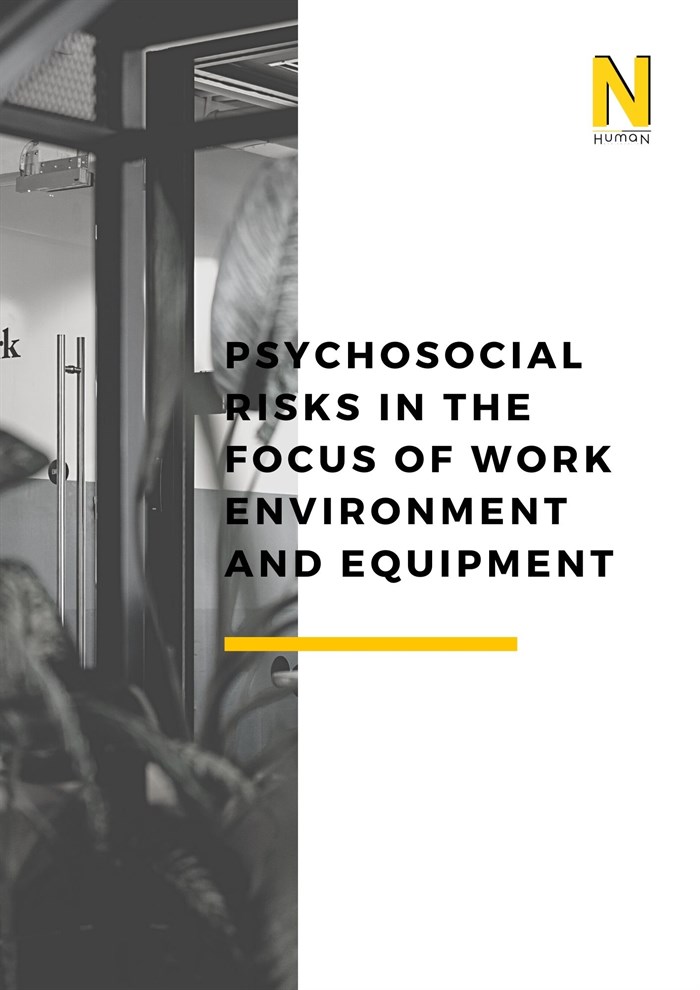Psychosocial Risks in the Focus of Work Environment and Equipment
In a good working environment, workplaces and working and production methods are designed so that workers can work and move safely. Employees are aware of the hazards and risks associated with raw materials used at work and substances produced in work processes and have received training on how to control these risks. The machines and tools used in the study are suitable for their purposes. The physical and mental preconditions of the employees are taken into account while planning the work and determining its framework.
Structural aspects of the work environment include the safety of passageways, workplace lighting, sound environment, and indoor air quality. Functional factors include regulating transport and road traffic and keeping workplaces and offices tidy and clean. Psychosocial factors in the work environment, together with functional and structural factors, is a collective term that encompasses the interaction between people in a workplace, the individual's work and its impact on the employee, organizational conditions, and the culture of the organization.
Loads and Transport
Workstations for lifting and transport should be arranged in such a way that the load remains reasonable and workers can recognize the physical strain and stress factors of the work according to their capacity. The main stressors are the weight of the load, working postures, and lifting frequency. Persons working with loads should be given adequate guidance and instruction in lifting, and practice should be made to ensure that they use proper techniques while doing so.
Loudness
Loudness is a common environmental stressor in the workplace. There is evidence to suggest that noise in the workplace negatively affects not only employee well-being and job satisfaction, but also performance and motivation. The evidence reviewed shows that the potential effects of noise on worker health, well-being, job satisfaction, and productivity depend on the nature and characteristics of the task at hand.
Windows and Ventilation
Current research shows that windows and ventilation quality can have both direct and indirect effects on worker health and well-being. There is accumulating evidence that the characteristics of the physical work environment can act as a coping resource, offering numerous opportunities for healing and restoration.
Risk Assessment and Risk Management
Risks in the workplace can be avoided when work tasks are well planned, employees are guided, and work is done carefully and thoughtfully. Although problems arise mainly from the physical work environment, psychosocial factors affect how people experience problems related to the work environment. Therefore, risk management is addressed by including the social and organizational context. The work to be performed, the organizational structures, the environmental context and physical processes of the work, and other workplace conditions; It is prepared by taking into account the risks that may arise from the working environment and equipment.
The main psychosocial risks that may arise from the work environment, equipment, and hazardous tasks included in ISO 45003:2021:
• insufficient equipment availability, suitability, reliability, maintenance or repair
• poor workplace conditions such as lack of workplace, insufficient lighting, and excessive noise
• lack of tools, equipment, or other resources needed to complete job tasks
• working in extreme conditions or situations such as very high or low temperatures
• working in unstable environments such as conflict zones.
Conclusion
It is known that the physical environment characteristics of the workplace have a significant and measurable effect on the employee's well-being and behavior. In addition, the physical work environment can be used to help develop a “psychologically supportive environment” and support employees. Good arrangement of working environment and equipment helps to use stress-reducing factors such as assisting the employee in coping with the task at hand, avoiding obstacles to coping with the task at hand, facilitating access to social support, providing access to positive activities, and giving people a sense of control over their physical and social environment. A good workplace design aims to fulfill this supportive role by considering the needs, goals, and motivations of the employees.
The most important element in providing a safe and healthy working environment is to identify the physical and psychosocial risks in your workplace and to take the necessary measures that can be used to manage the identified risks.
NHUMAN Consultancy's five-stage İYRS ® model has been developed to identify psychosocial risks that may arise from the work environment or equipment and to provide risk management practices and support services to prevent these risks.

References
Psychosocial Working Environment. University of Bergen. (n.d.). Retrieved March 16, 2022, from https://www.uib.no/en/hms-portalen/79797/psychosocial-working-environment
Safe and healthy work environment. Work environment - The Centre for Occupational Safety. (n.d.). Retrieved March 16, 2022, from https://ttk.fi/en/wellbeing_at_work_and_occupational_health_and_safety/the_basics_for_occupational_safety_and_health/work_environment#11a02d46
ISO 45003:2021(en) Occupational health and safety management — Psychological health and safety at work — Guidelines for managing psychosocial risks.
Ulrich, R. S. (1984). View through a window may influence recovery from surgery. Science, 224(4647), 420-421.
Evans, G. W., & McCoy, J. M. (1998). When buildings don’t work: The role of architecture in human health. Journal of Environmental psychology, 18(1), 85-94.McCoy, J. M., & Evans, G. W. (2005). Physical work
environment. Handbook of work stress, 219-245.